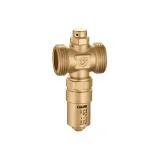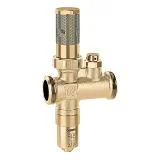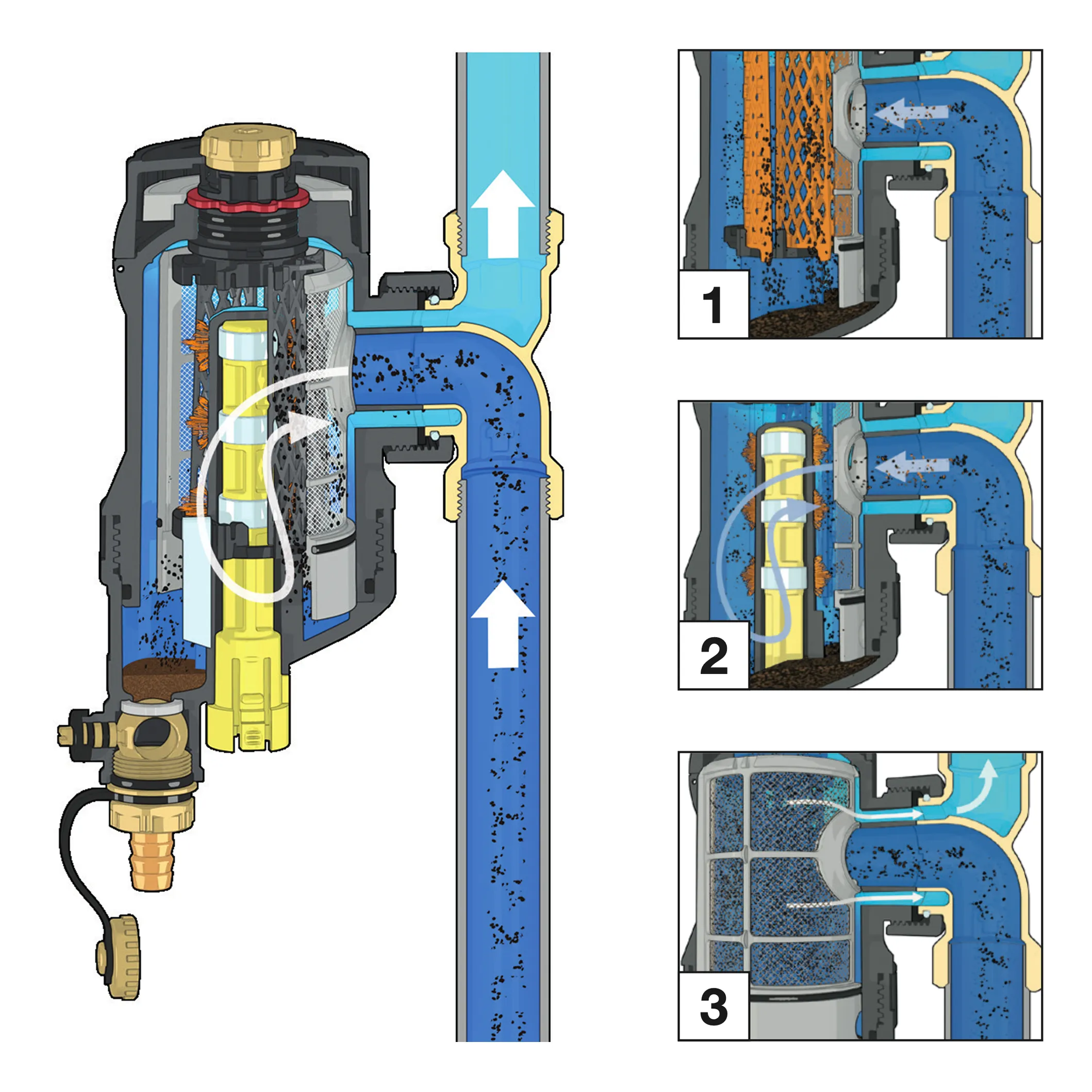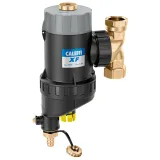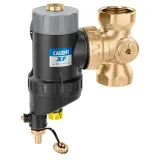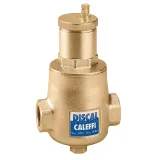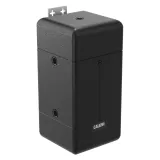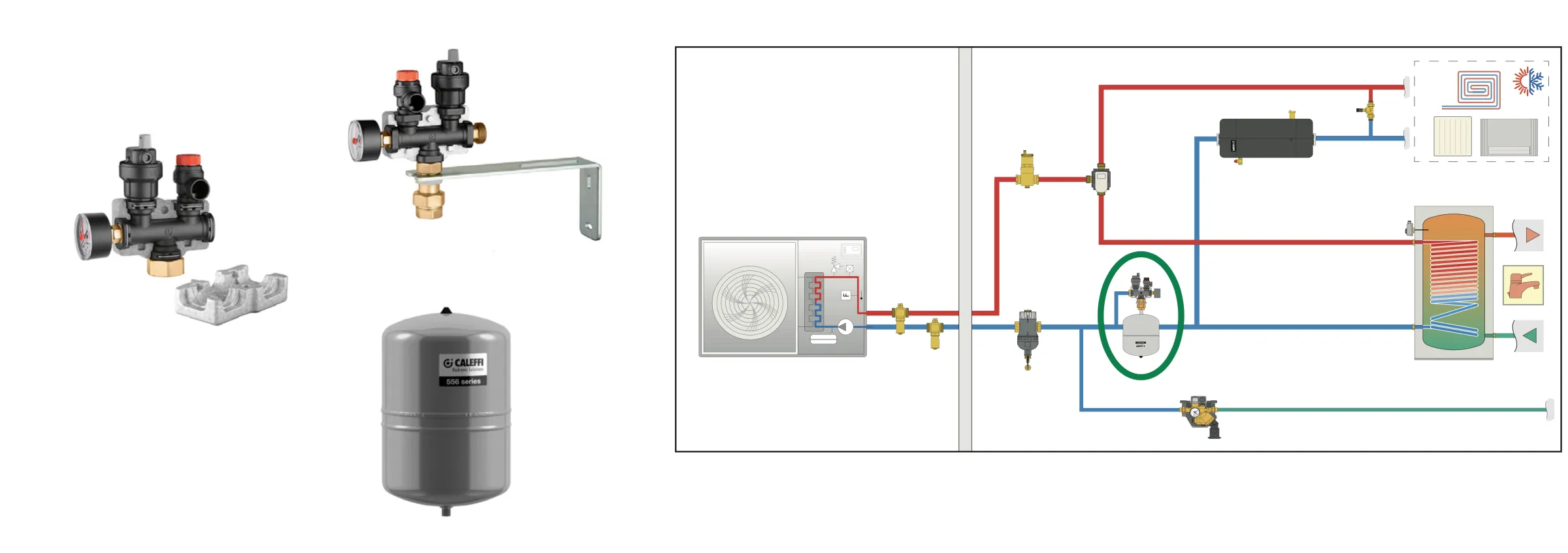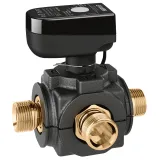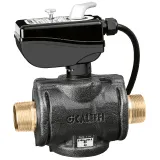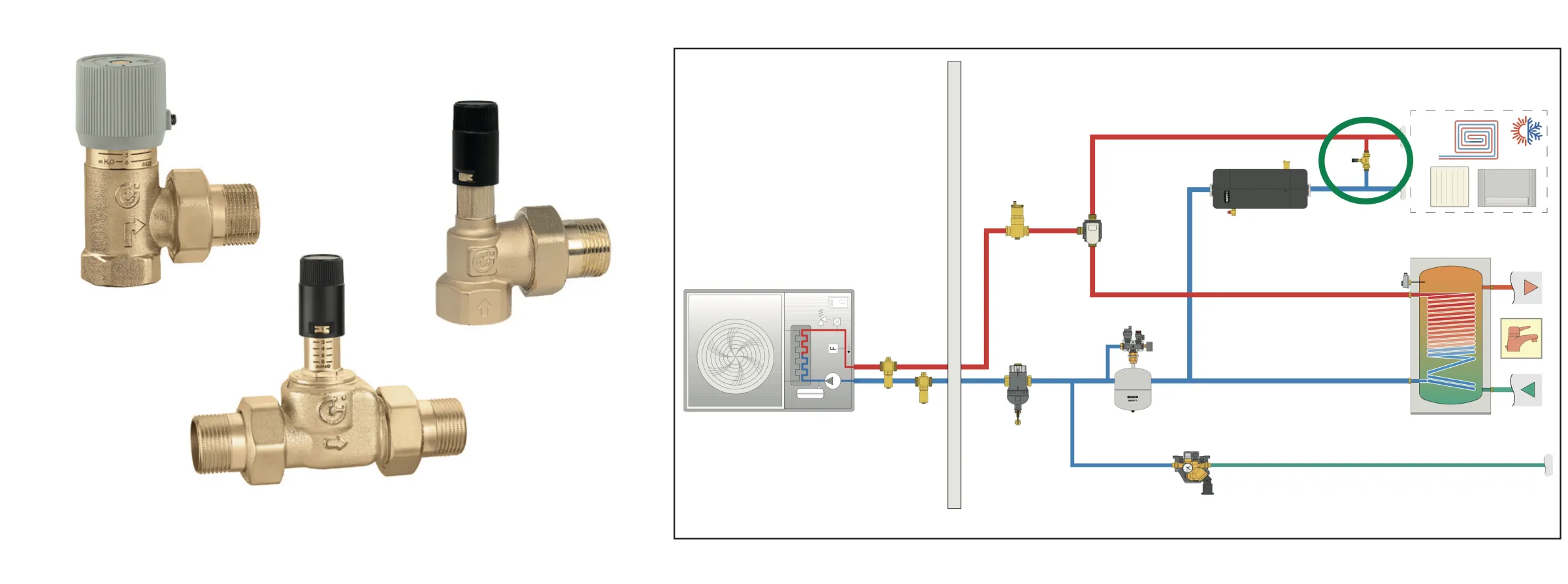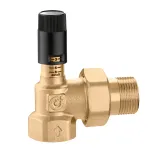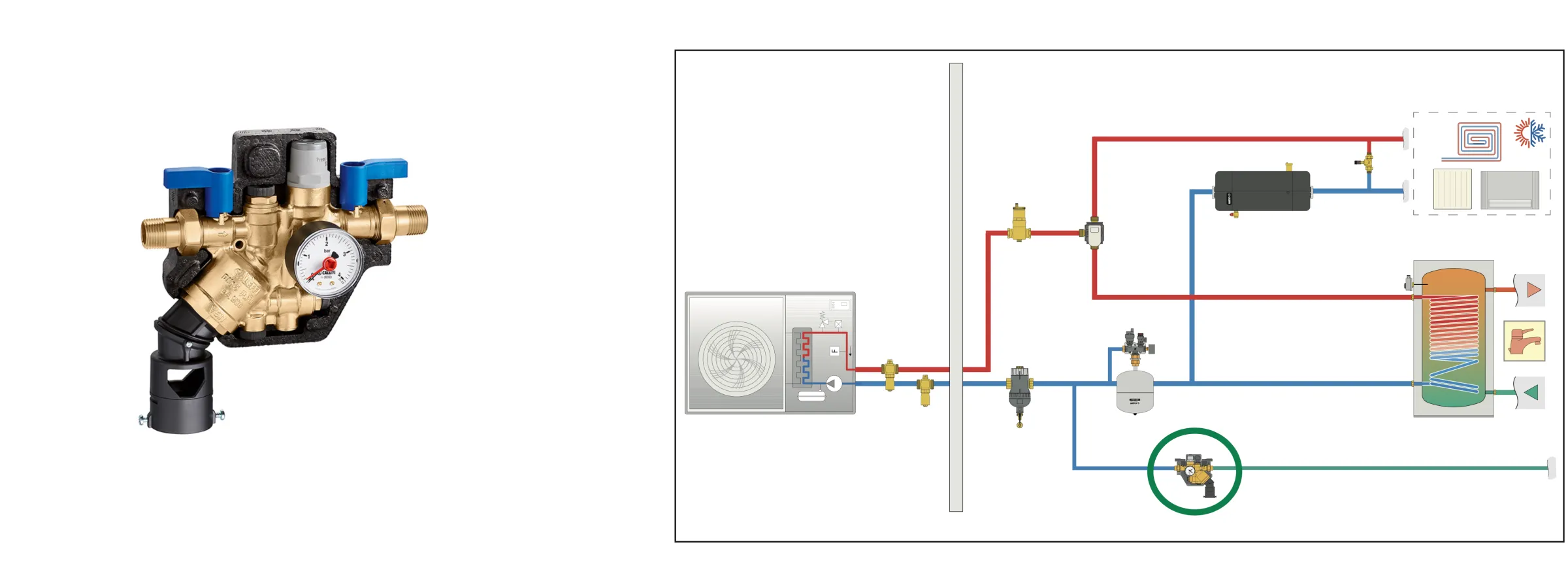In monobloc and hydro-split systems, the hydraulic circuit has an external section which connects the heat pump to the rest of the system. This section, although short and well insulated, may be at risk of frost in certain sub- zero temperature conditions.
In the event of simultaneous frost-blackout conditions, this may cause significant damage to the gas/water heat exchanger in the machine.
Manufacturers request that glycol is added to the water in the system, or that special antifreeze valves are used. Using glycol can be financially demanding and presents a series of disadvantages (see box opposite). An antifreeze valve is a mechanical protection system offering an alternative to the use of glycol.


